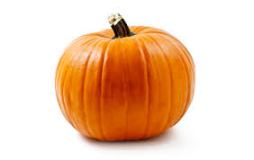I’m still in the process of re-posting blogs from my old site. Here’s an old one on exercise. I’m assuming most people reading this blog are already fairly into fitness but it never hurts to have a reminder as to why exercise is good for you!
If you read the title of this blog and thought “Great, she’s going to tell me it’s not all that important” you couldn’t be more wrong. Making regular physical activity a part of your lifestyle is probably the best thing you can do for your mental and physical health. Nutrition advice can get confusing but exercise advice is pretty straight forward: it’s good for you and most people don’t do enough. As more and more studies on physical activity are completed more health benefits are discovered. Sadly, over half of all US adults do not get the recommended amount of exercise and our health and waistlines are suffering because of that.
The health benefits of exercise are numerous:
- Decreases risk of heart disease, stroke, high blood pressure, high cholesterol, high triglycerides, type 2 diabetes, metabolic syndrome, colon cancer, and breast cancer
- Decreases stress, enhances mood and reduces depression
- Improves body image
- Helps maintain bone and joint health
- Helps maintain or reach a healthy weight
- Improved heart health, cardiovascular fitness, and muscle strength
- Better sex drive!
- And….it can be fun! Seriously, one of the main reasons I exercise is because I truly enjoy it. The trick is to find the type of exercise that you find fun. For instance, I love running, cycling hiking, skiing…but put me in a group fitness class and I’ll be hating life for the next 60 minutes. If you enjoy the exercise, you’ll be more likely to stick with it than if you force yourself to do something you hate. That’s not building a good relationship with exercise!
Just how much physical activity does it take? The guidelines are as follows:
- For general health: 30 minutes of moderate to vigorous activity most days (or about 150 minutes of moderate intensity activity/week)
- For weight loss: 60-90 minutes of moderate to vigorous activity every day
Moderate intensity activities are those that elevate your heart rate and increase breathing rate but are still easy enough that you can talk (but not sing) while doing them. Examples include brisk walking, dancing, gardening/yard work, pedaling easily on a bike, and light weight lifting.
Vigorous activities are more intense. You should be breathing hard enough that you cannot carry on a normal conversation. Examples include running, bicycling, aerobics, basketball, and heavy weight lifting.
The intensity that you exercise at will be dictated by your health and goals. Do not start out too intensely or you risk injury. If you haven’t been exercising or have health complications begin at a low/moderate intensity. If you’ve already been exercising moderately for awhile you may see improvements by taking it up to a more vigorous level. It is important to continually change up your workouts (whether intensity, time, or type of exercise) to make sure that you are constantly challenging your body and to prevent burnout. The human body is highly adaptable and after months of nothing but the same old 30 minutes of walking a day your body will adapt and you will hit a fitness plateau.
Be sure to include a mix of aerobic/cardiovascular (walking, jogging, biking), strength/resistance (lifting, or other weight bearing activities such as push-ups and squats), and balance/flexibility(stretching, yoga) exercises.
So why bother exercising? Because you will feel better physically and mentally, and live longer and have less health complications!
Remember, exercise doesn’t have to be some boring activity that takes place in a gym. Walk, hike, bike, dance, rollerblade, swim, kickbox, ski, rockclimb, row, play a team sport,…the key is moving your body. The human body was not meant to sit at a desk all day. Try new activities until you discover one that you find enjoyable. That way you will be much more likely to keep doing it. Don’t force yourself to participate in an activity that you can’t stand, that’s not the point and you won’t be able to keep it up forever. That picture on this blog….that’s me riding in the Iron Horse Bicycle Classic. I found cycling, now you go and find your passion!









